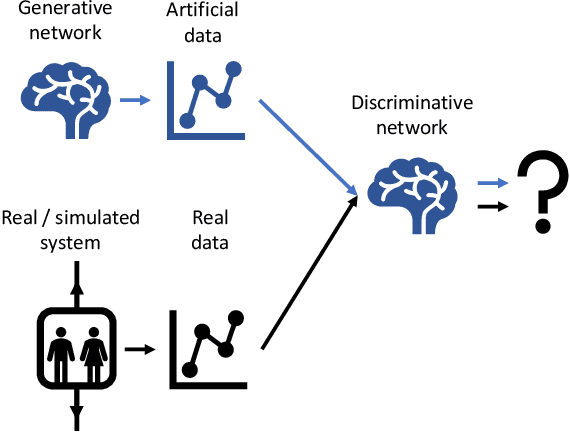Simulation of an Elevator Group Control Using Generative Adversarial Networks and Related AI Tools
Paper and Code
Sep 03, 2020



Testing new, innovative technologies is a crucial task for safety and acceptance. But how can new systems be tested if no historical real-world data exist? Simulation provides an answer to this important question. Classical simulation tools such as event-based simulation are well accepted. But most of these established simulation models require the specification of many parameters. Furthermore, simulation runs, e.g., CFD simulations, are very time consuming. Generative Adversarial Networks (GANs) are powerful tools for generating new data for a variety of tasks. Currently, their most frequent application domain is image generation. This article investigates the applicability of GANs for imitating simulations. We are comparing the simulation output of a technical system with the output of a GAN. To exemplify this approach, a well-known multi-car elevator system simulator was chosen. Our study demonstrates the feasibility of this approach. It also discusses pitfalls and technical problems that occurred during the implementation. Although we were able to show that in principle, GANs can be used as substitutes for expensive simulation runs, we also show that they cannot be used "out of the box". Fine tuning is needed. We present a proof-of-concept, which can serve as a starting point for further research.
 Add to Chrome
Add to Chrome Add to Firefox
Add to Firefox Add to Edge
Add to Edge